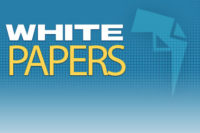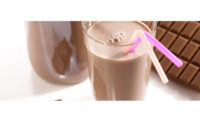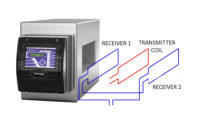By 2020, the dairy sector, FrieslandCampina and the applications for
which milk is used will all look very different to the way they are
now, according to CEO Cees ‘t Hart.
By 2020, the dairy sector, FrieslandCampina and the applications for which milk is used will all look very different to the way they are now, according to CEO Cees ‘t Hart.
Under the slogan milk2020, ‘t Hart shared his thoughts on the future of dairy in 2020 with an audience of more than 700 FrieslandCampina dairy farmers during the Netherlands-based company’s youth day.
“Doing so provides us with both inspiration and building blocks for the future,” ‘t Hart said.
Hart said that the young farmers were part of what he called the crossroads generation.
“If they want to be successful in 2020, they must proceed in the right direction over the coming years. And that means having to make choices in order to realize their dream,” he added.
Views and reflections
’t Hart stressed that he was not using the youth day in Arnhem, the Netherlands, to unveil FrieslandCampina’s new strategy. He was, he said, simply sharing his thoughts and views on how the dairy sector and FrieslandCampina might change by 2020.
“We won’t be unveiling our strategy until later this spring. What I’ve been putting together for today’s event is a series of reflections and thoughts about 2020. You could compare it to what happens in the automobile industry. For instance, we’re seeing cars driving around now, which have some of the characteristics of the concept cars that were being exhibited five years ago at the Detroit car show. But there are also dream cars that we’ve never seen on our roads. The fact that through milk2020, FrieslandCampina is now sharing its reflections on a possible future with the outside world is something new. And who better to share them with than the next generation of dairy farmers? Doing so will provide us with both inspiration and building blocks for the future,” he said.
The young farmers were asked to use their mobile phones to register their votes on a number of possible scenarios based on the milk2020 concepts. Initially, 32% of the audience rejected the milk2020 ideas as pure fantasy. But eventually, 94% endorsed the statement: ‘I’d like to be part of milk2020’.
Dairy is one of the most valuable foods
Is this likely to become a reality?
“By 2020, milk will be seen and handled the world over as one of the most valuable foods. The nutrients in milk will be recognized for their positive effects on human health. A balanced diet without dairy or milk components? Unthinkable – and inadvisable!” he said.
Northwest Europe designated as one of the leading production regions for dairy in 2020
”Imagine yourself in a satellite and think about the earth needing dairy produce. Where would you produce it? Wherever it’s easiest and most logical to do so,” ’t Hart suggested. “In northwest Europe, we can secure the global food supply with a minimum load on the environment and on our surroundings. Why? Because northwest Europe offers the best natural conditions for the production of milk and because the dairy farmers there have an unrivalled capacity to combine this with modern technology.”
‘t Hart also said he thought it quite possible that innovations currently being prepared by the Dutch Courage Foundation, such as the Cowfortable initiative, would have been broadly rolled out by 2020.
Dairy and sustainability no longer an issue in 2020
”Imagine that by 2020, dairy and sustainability are no longer an issue. Existing problems will have been resolved in the decade in between. In other words, we will have sustainable enterprise, social acceptance and extra market opportunities,” ’t Hart said.
Imagining what might happen in the 2010-2020 period, possible scenarios include FrieslandCampina’s plants running on green energy and dairy entrepreneurs being rewarded for low energy consumption per liter of milk produced.
Successful FrieslandCampina presence in yet more countries
FrieslandCampina has already built up strong positions in Europe and in parts of Asia and Africa with its consumer products and globally with its ingredients. But what about in 2020? Where there is promising demand for dairy, FrieslandCampina will respond, according to milk2020. In the context of that scenario, FrieslandCampina would be active and successful in many more countries than it is at present.
“Whether we achieve this isn’t of course something we will decide but will depend on our consumers, buyers, employees and member dairy farmers, just as it does now,” ’t Hart added.
By 2020, FrieslandCampina will be using milk to respond to consumers’ needs in an entirely new way
Consumers currently know dairy and FrieslandCampina through its foods, which range from dairy drinks and milk powders to cheese and butter. And in 2020? In the ideas that ‘t Hart unfolded to his audience, there was also a future role for the application of milk components in cosmetics and clothing. The use of milk components in food would continue to be vital, even though it could take a very different form. milk2020 even suggests the idea that dairy farmers might extract water from milk on their farms, which would then be used in other innovative applications.
The FrieslandCampina cooperative as a partnership of six alliances of dairy entrepreneurs
According to ’t Hart, there was no question that by 2020 the company would still be owned by its dairy farmers. But what form would that ownership take? ’t Hart outlined a possible scenario: “At the moment, FrieslandCampina is a collective of enterprising dairy farmers. By 2020 it will be a collective of dairy entrepreneurs. FrieslandCampina is a partnership bringing together alliances of dairy businesses. These might include alliances of entrepreneurs who are concentrating on low cost production for the global market, entrepreneurs who are producing milk specifically for cheese, or entrepreneurs who are turning out high-tech milk for medical applications. By 2020, these entrepreneurs will be deciding for themselves which markets, milk, types of dairy business and hence which alliances tie in best with their goals and capacities as commercial operators.”
Which is why ’t Hart believes that dairy farmers should in future be referred to as ‘dairy entrepreneurs.’
Get our new eMagazine delivered to your inbox every month.
Stay in the know on the latest dairy industry trends.
SUBSCRIBE TODAYCopyright ©2024. All Rights Reserved BNP Media.
Design, CMS, Hosting & Web Development :: ePublishing


